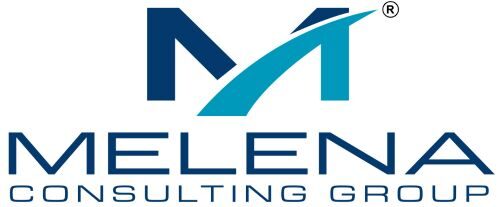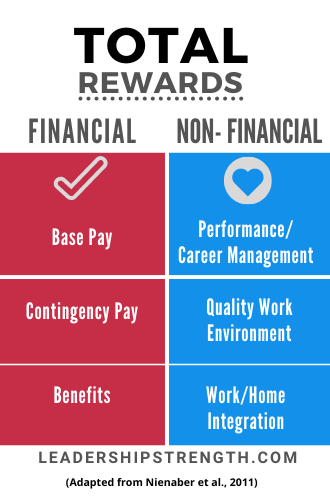Money is critical to our survival. And when people don’t have sufficient resources to meet their needs, it motivates.
But contrary to common belief, money is not the be all end all. While some people are motivated by money, the reasoning is not so simple.
What the Research Has to Say
In their research on seven elements of employee motivation, Krüger and Rootman found that, while financial rewards indeed motivate employees, they have the lowest influence on employee motivation compared to the six other elements studied: interesting and meaningful work, recognition and feedback, empowerment, working conditions, strong leadership, and workplace fairness.1
So, leaders shouldn’t focus on rewards alone to keep employees satisfied, motivated, and committed.2
When Money Does and Doesn’t Motivate
Krüger and Rootman’s research covered financial rewards, including salaries and wages, health benefits, commissions, bonuses, and company share options. They found that when employees are earning decent wages, money loses its power to boost employee motivation, satisfaction, and commitment.3
For employees with adequate compensation, money only motivates when it’s provided for exceptional performance, the employee is aware that it’s performance-based, and it’s part of employee recognition, whether it is called recognition or a bonus.4
But this doesn’t mean that organizations can pay inadequate wages.
Some individuals are naturally motivated by money.
The Economic Dimension of Motivation
Dr. Eduard Spranger and Gordon Allport conducted extensive research into the key drivers or motivators of individuals. Their combined efforts resulted in the development of the “Motivation Index” that focuses on “Seven Dimensions of Motivation.” The seven dimensions can be measured with the Motivators Assessment. One of these seven is called the “economic dimension.”5
People who score high in the economic dimension are motivated by financial gain, self-interest, and getting a return on investment. They value what is practical and useful in the world of work. They want to know what they will get out of their investment of time, energy, and talent. The economic person may be more interested in the accumulation of wealth.6
This is neither bad nor good. It’s simply an indicator of a key motivator for some people, and it impacts the effectiveness of financial rewards.
Competitive Compensation is a Must
To attract and retain top talent, organizations must develop a competitive compensation system based on their geographical location and industry standards. And in a virtual world, geography takes on a whole new meaning.
Size Up Your Competition
Take a close look at the compensation strategies of the organizations in your industry that are successfully recruiting and retaining the talent you need. If you’re part of a small business or non-profit organization that can’t compete based on salary, take heart. Money isn’t the only tool in your kit.
Tap into “Total Rewards”
You can gain competitive advantage with a more holistic view of compensation called “total rewards.” Depicted below, this approach focuses on both financial compensation and non-financial rewards.7
Financial rewards encompass the broad categories of base pay, contingency pay, and benefits. Whereas non-financial rewards focus on performance management, career development, quality work environment, and work/home integration,8 all of which address the psychological needs of employees.
A Holistic Approach Wins
The literature on compensation slices and dices these categories in many ways. However, the key take-away is that organizations that take a holistic approach to rewards management create a motivating work environment that attracts and retains vital talent. And this translates to stronger performance.
Career Development as a Competitive Advantage
If you’re part of a small business or non-profit, there are creative ways to bring talent through your doors.
There are many talented individuals who are getting ready to complete their studies in your industry and who are hungry for experience in the field. This is a golden opportunity for you to offer them internships and entry-level positions. You can provide them a positive learning experience in exchange for their tangible contributions to your organization.
However, it’s vital to assign them meaningful work that will develop their skills and not just the tasks your regular employees don’t want to do.
Sure, they may take the experience they gain with your organization and move on to make more money. However, you stand to gain from their eagerness to learn, to make a difference, and to prove what they can do. More importantly, if you create a great environment where they can learn and thrive, they will become ambassadors for your organization who will send more talent your way.
While money is an important part of your rewards plan, it is not the only factor that conveys employee value. To recruit, retain, and motivate top employees, focus your resources and energy on creating a great workplace.

SYLVIA MELENA is the Founder and CEO of Melena Consulting Group, a leadership and management consulting and training company. She is also the award-winning author of Supportive Accountability: How to Inspire People and Improve Performance.
Ready to Boost Employee Motivation?
Individualize your approach with the Motivators Assessment!
REFERENCES 1, 2, 3, 4 Krüger, J. & Rootman, C. (2010). How do small business managers influence employee satisfaction and commitment? Acta Commercii, 10(1), pp. 59 – 72. Retrieved from: https://doaj.org/article/422f8bb6fba844f088f4be78c585b7c4 Date accessed: October 30, 2016. Creative Commons License. 5, 6 Sample Motivators Assessment Report. A24x7 & Behavioral Resource Group, 2020. https://leadershipstrength.com/wp-content/uploads/2020/11/Motivators_Sample-Report_Melena-Consulting-Group_11-5-2020.pdf 7, 8 Nienaber, R., Bussin, M. H.R., and Henn, C. (2011). The relationship between personality types and reward preferences. Acta Commercii, 11(2), p.p., 56-79. doi: 10.4102/ac.v11i2.153 Retrieved from: https://doaj.org/article/789c2aa73f7c46568fbe8dd77c74b19c Date accessed: March 19, 2017. Creative Commons License.






